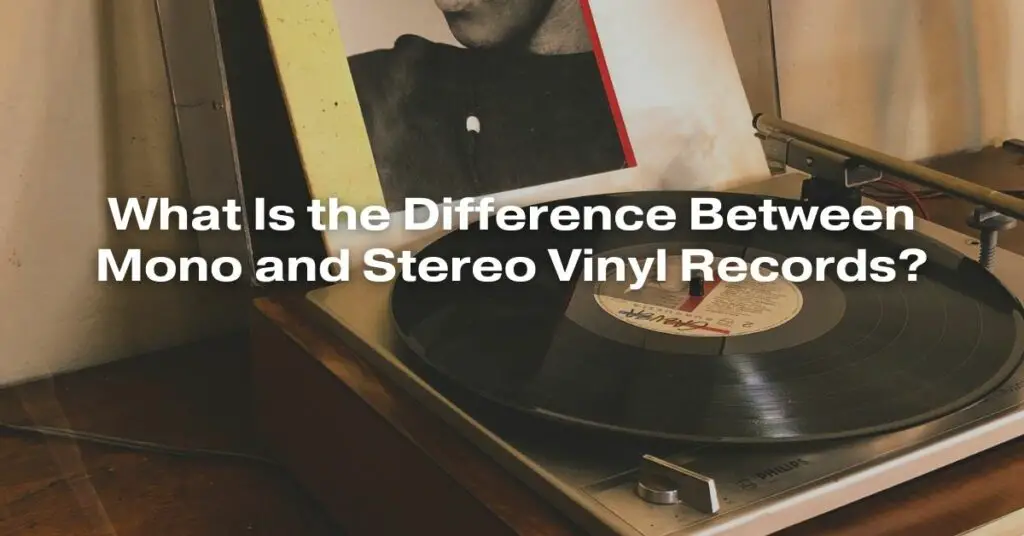In the world of vinyl records, there are two primary formats: mono and stereo. While both formats deliver captivating musical experiences, they differ in their technical aspects and the listening experience they provide. Understanding the nuances of mono and stereo records is essential for appreciating the rich history of vinyl and making informed choices when expanding your record collection.
Monophonic Splendor: A Single Channel of Sonic Delight
Mono records, often referred to simply as “mono,” emerged as the dominant format in the early days of vinyl. These records utilize a single audio channel to capture and reproduce sound. The result is a focused and direct listening experience, with all the musical elements emanating from a central point. Mono records are often praised for their cohesiveness and punchy sound, particularly in genres like rock and roll, where the energy of the performance takes center stage.
Stereophonic Grandeur: A Two-Channel Symphony
Stereo records, introduced in the late 1950s, revolutionized the listening experience by employing two distinct audio channels. This innovation allowed for the separation of instruments and vocals, creating a sense of spaciousness and depth in the soundstage. Listeners could now perceive the placement of instruments and vocals across the stereo field, adding a new dimension to the listening experience. Stereo records are particularly well-suited for genres like classical music and jazz, where the nuances of instrumentation and the interplay between musicians are crucial.
Technical Distinctions: Grooves and Cartridges
The technical differences between mono and stereo records extend beyond the number of audio channels. Mono records feature grooves that vibrate solely in a horizontal plane, while stereo records utilize grooves that move both horizontally and vertically. This difference necessitates the use of specific cartridges for each format. Mono cartridges are designed to track the horizontal movements of mono grooves, while stereo cartridges can handle the more complex movements of stereo grooves.
Which Format is Superior? A Matter of Preference
The debate over mono versus stereo often sparks passionate discussions among audiophiles. Ultimately, the choice between the two formats is a matter of personal preference and the type of listening experience one desires. Mono records offer a focused and direct presentation of the music, while stereo records provide a more expansive and immersive soundscape. Both formats have their merits and can deliver captivating musical experiences.
Collecting Mono and Stereo Records: A Journey Through Vinyl History
Collecting mono and stereo records is a fascinating journey through the evolution of audio technology and the history of recorded music. Early mono pressings from the 1950s and 1960s are often sought after by collectors for their historical significance and unique sonic characteristics. Stereo records from the 1960s and 1970s represent a golden era of stereo recording, with many audiophiles seeking out these pressings for their exceptional sound quality.
Conclusion: A World of Vinyl Riches
The world of vinyl records is a treasure trove of musical gems, with mono and stereo formats offering distinct listening experiences. Whether you prefer the focused energy of mono or the expansive soundscape of stereo, there’s a vinyl record waiting to transport you to a world of sonic delight. Embrace the nuances of each format and embark on a journey through the rich history of recorded music.

